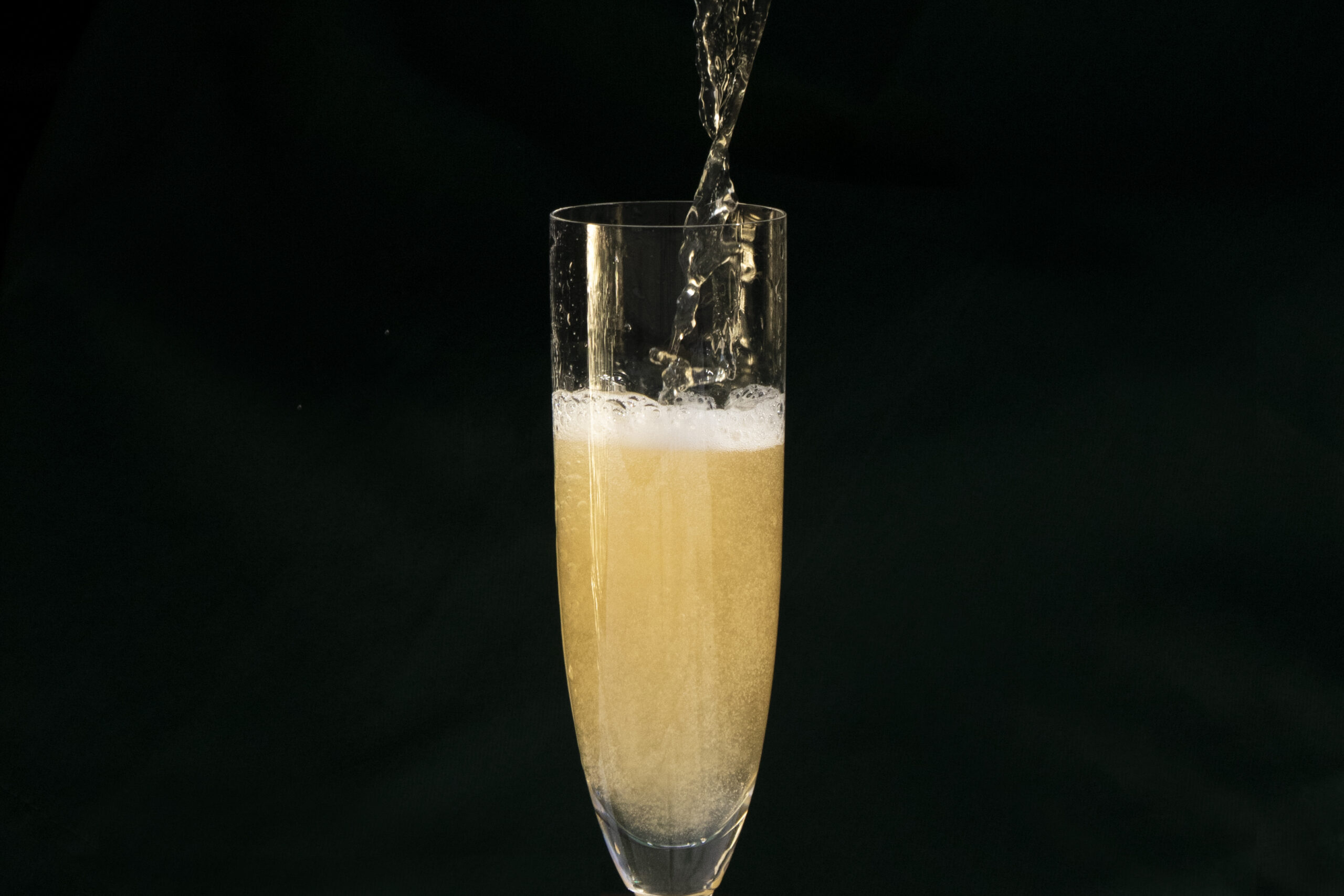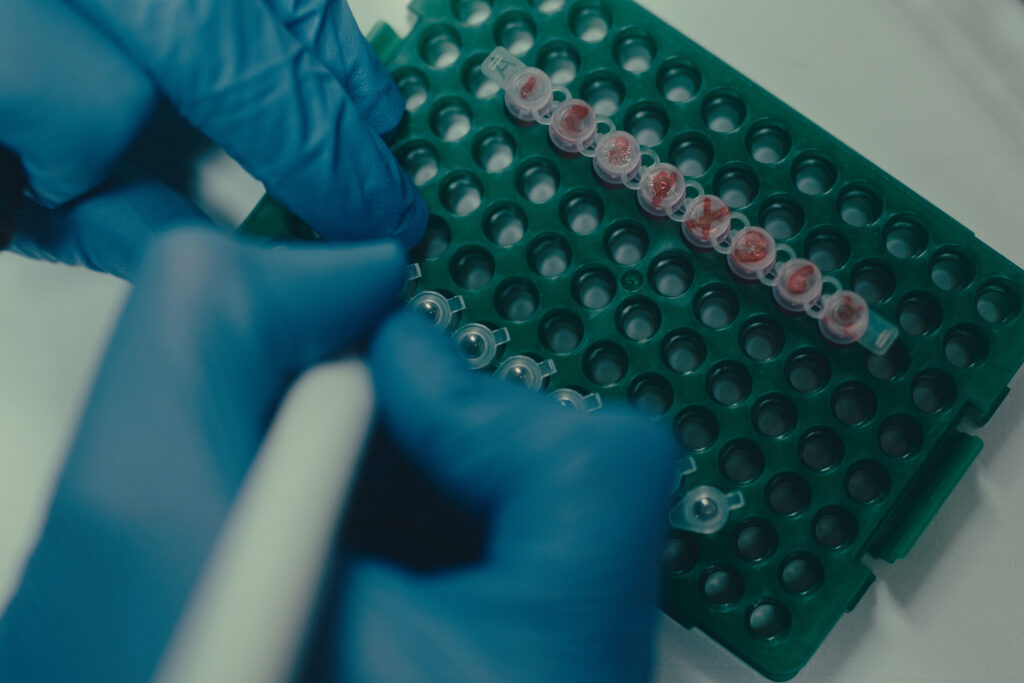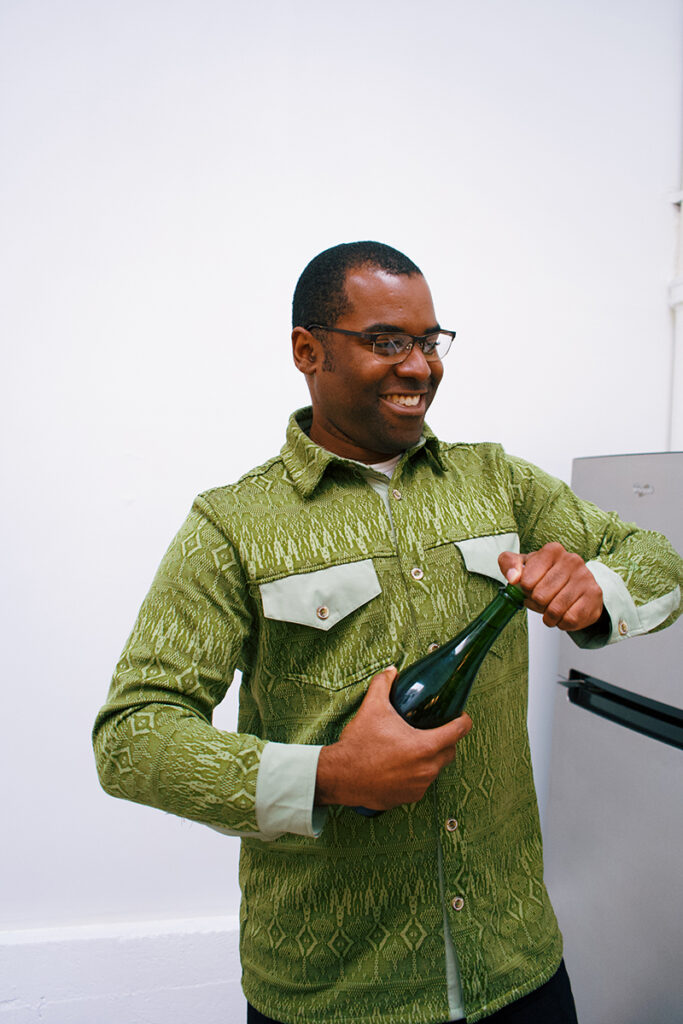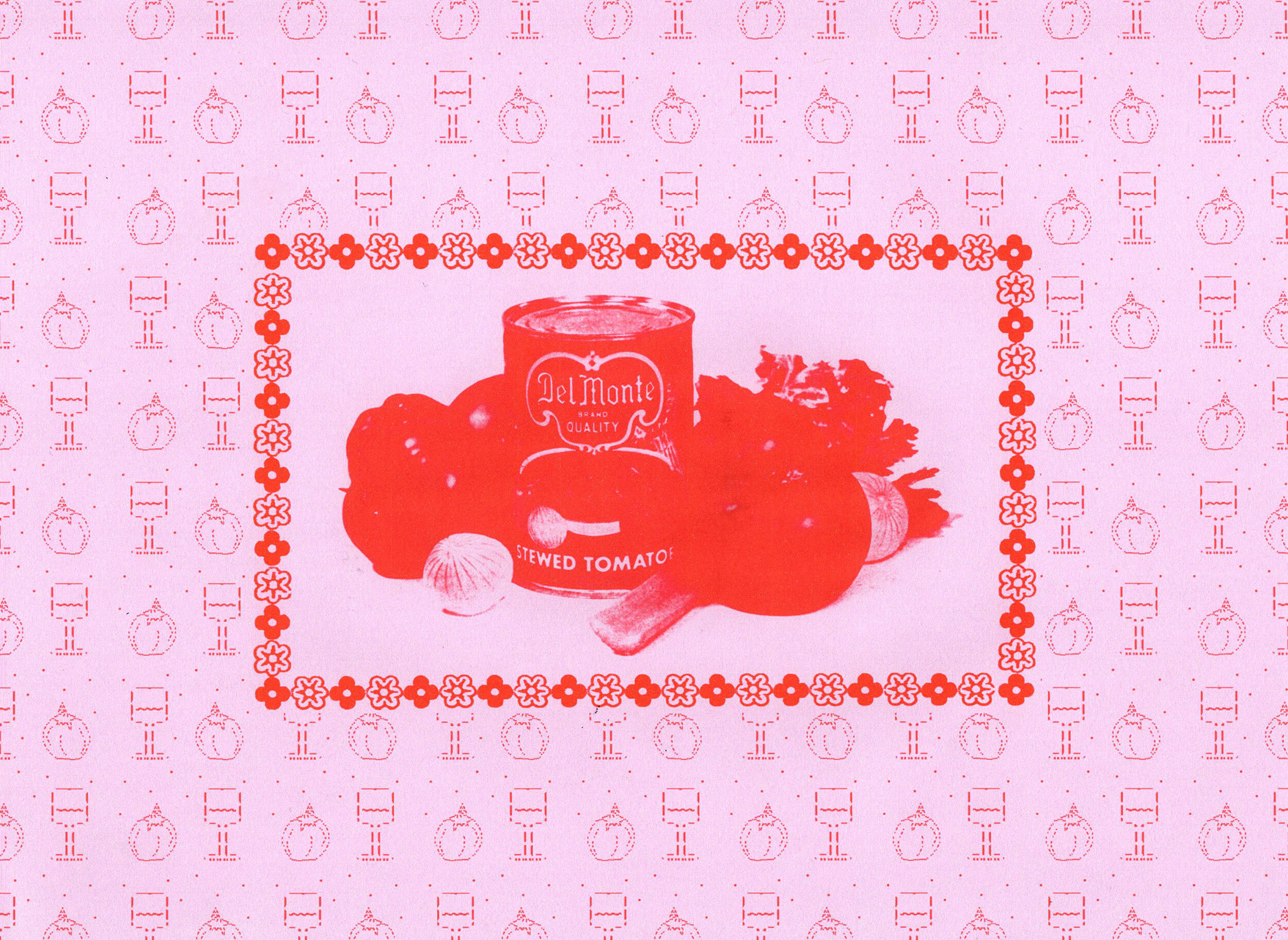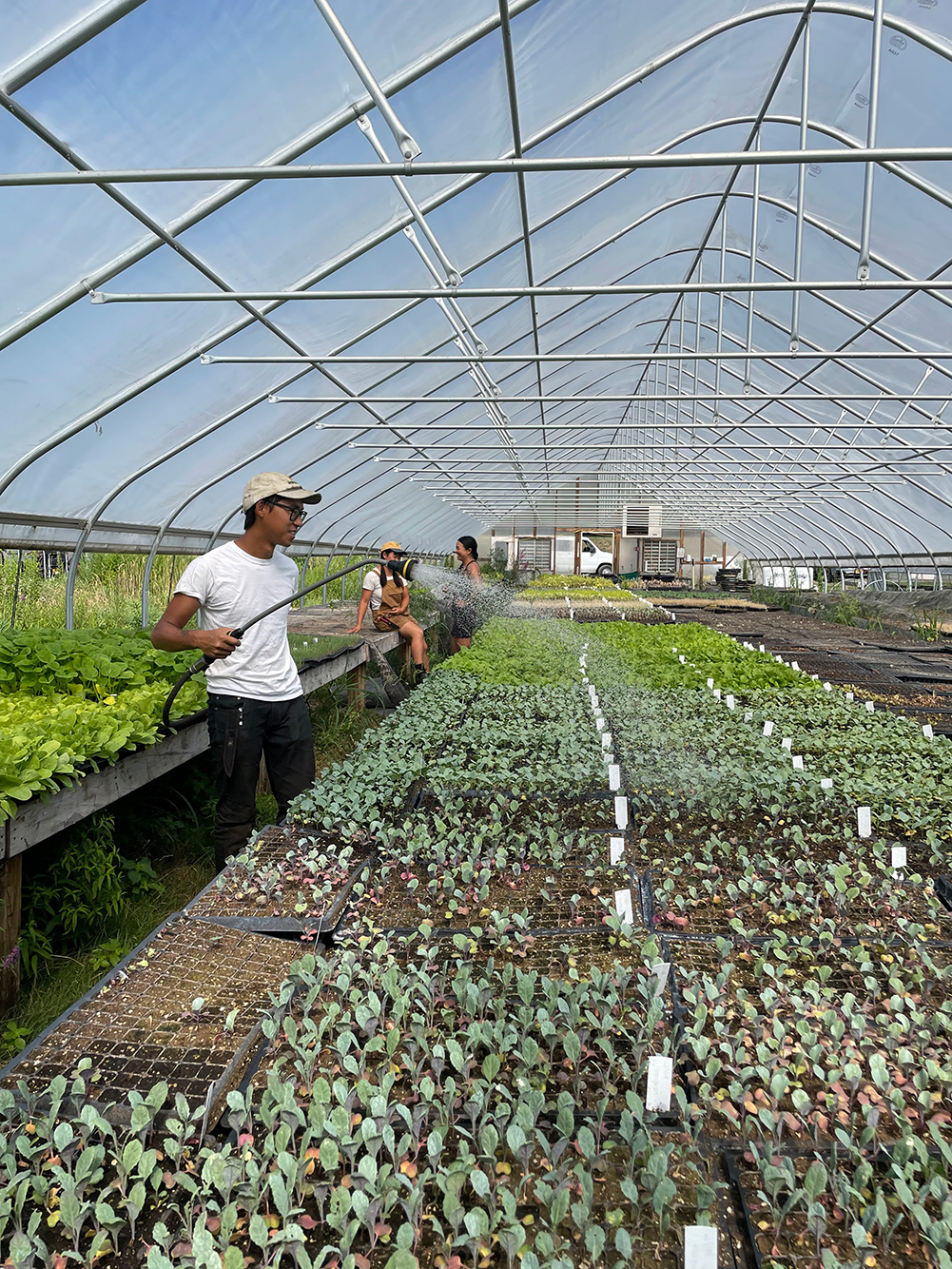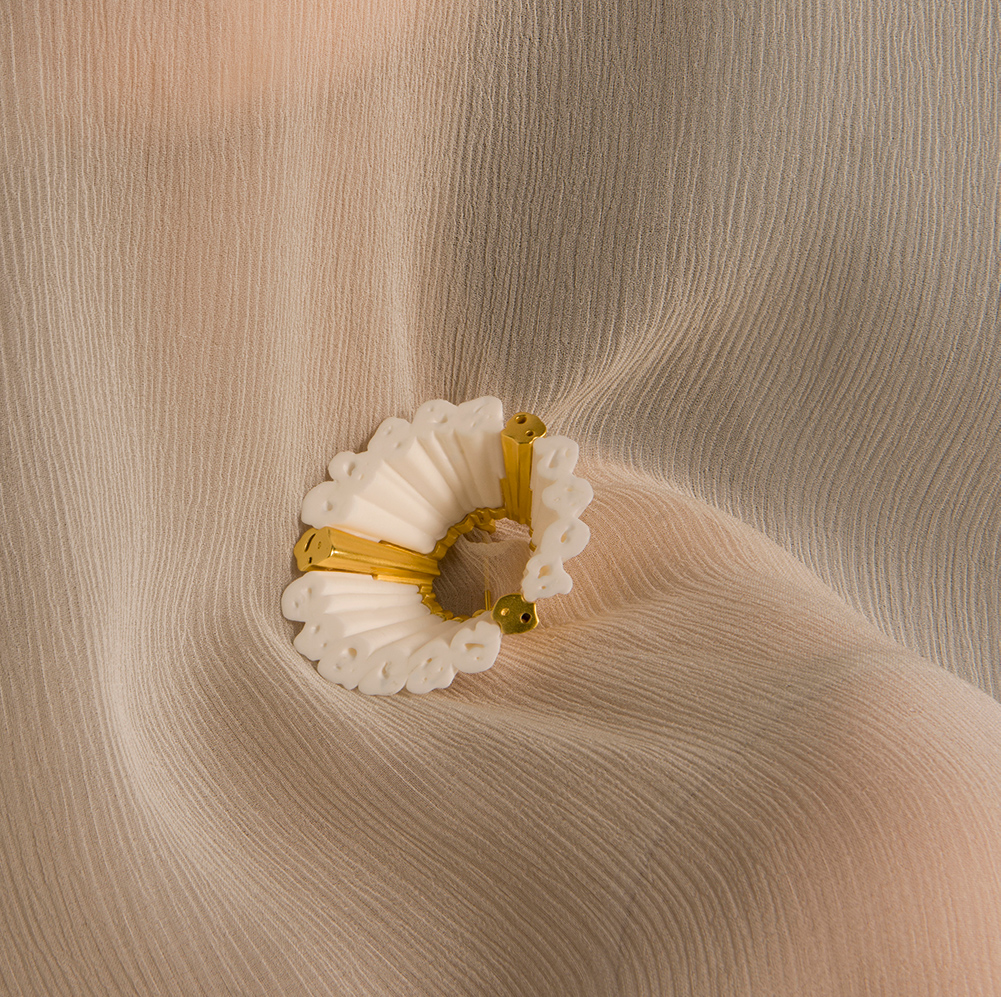People have been getting drunk off of palm wine for millennia. A sweet, fresh drink found across the world in tropical and sub-tropical cultures, palm wine is an alcoholic beverage created from the sap of various different species of palm trees. Cultures across Africa, the Caribbean, South America, South Asia, Southeast Asia and Micronesia have traditionally drunk palm wine as a staple pairing with their cuisines. However, in some cases the widespread consumption of palm wine is contributing to ecological crisis, threatening certain species of palm trees with overharvesting to meet production. In the face of climate change and hyper-capitalism, how can sustainable production strategies and innovation be used to ensure the future of palm wine?
There are two ways to extract palm sap; tapping or felling.
With the first method, a sap is collected by a tapper, an individual who climbs to the flower at the top of the tree, makes an incision and attaches a bucket to collect the sap overnight which they come back the next day to collect. The white liquid sap is sweet and non-alcoholic, after fermenting for 24 hours it becomes the alcoholic beverage people know and love.
With the second method, the entire tree is cut down and a fire is lit at the bottom to facilitate the collection of sap. Fermentation begins immediately after collection due to natural yeasts in the air. Within two hours, fermentation yields a wine that is sweet and mildly intoxicating, . The fermentation can go on for the next 24 hours to yield a more sour, acidic, stronger wine. If the wine is allowed to ferment for longer than 24 hours, it becomes vinegar.
Ikenga Wines, a palm winemaker based in the United States, is approaching the time-old beverage with the forward-thinking lens of bio-design. Their mission is to produce world-class fine wines that are unlike those available on the market today, and transport drinkers with an intentional tasting experience that focuses on flavor while reducing environmental impact. MOLD sat down with Onye Ahanotu, the founder of Ikenga Wines, to dive into the world of bio-designed wine and explore how transforming a drink to be sustainable presents opportunities for flavor innovation and experimentation.
Hiba Zubairi:
What is your approach to creating palm wine?
Onye Ahanotu:
At Ikenga Wines, we’re focused on celebrating and elevating flavors of the tropical world through wines such as palm wine. Palm wine is found throughout the tropical world, from Central America to West Africa to South Asia. I’m Nigerian American, so for me, my connection to it culturally, was through Nigeria. And conventionally, the way that palm wine is made is that you have a tapper, that’s what they call the people who collect the palm wine. They’ll either climb a palm tree, or they’ll cut a palm tree down. Different regions do it differently. In some places, they’ll extract the sap from the palm tree. This is at the heart of the palm or at the flower, like an inflorescence. They’ll get the sap out of the tree and then within a matter of a couple of hours, it spontaneously ferments and turns into palm wine. Traditionally, you would drink it the same day that it’s harvested, because after a day or two it starts to turn into vinegar. If you like that kind of flavor, then you can wait a little bit longer. Typically, it has a really short shelf life and a really short window of when people consume it.
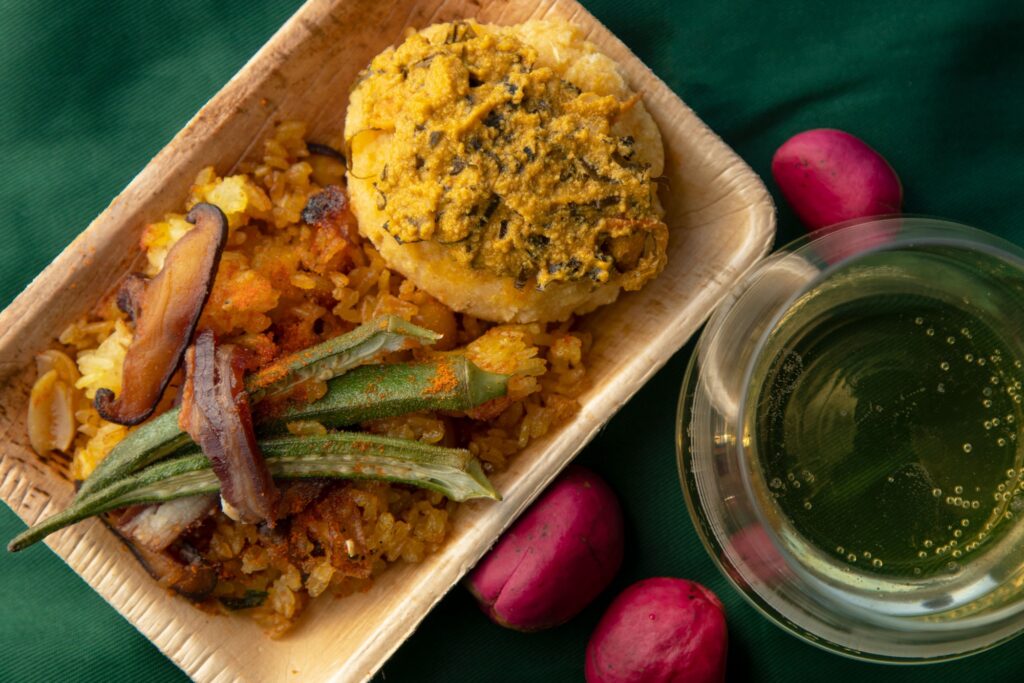
HZ:
How did you become familiar with the process of palm wine production?
OA:
I went out to Nigeria, I have family there still and I’ve been there a few times growing up. But I had this idea of wanting to bring palm wine to the US and really had no place to start from, I really hadn’t even tried palm wine. It was just an idea and I figured it was going to be easy. My thoughts were that people were already bottling this, but they just haven’t started importing this. I went to Nigeria and spent 3 months there exploring. I worked with a couple tappers while I was out there.
HZ:
Have you ever tapped yourself?
OA:
No, I haven’t. If you haven’t seen it, it’s literally somebody who has this makeshift rope and they climb a palm tree that is several storeys tall.
In those differences, climbing it or cutting it down, there’s arguments around quality and around which one tastes better. There are different products or experiences that result from how you harvest it. So I went to Nigeria to get a crash course on all of that. Such as, ‘What is the difference? What does palm wine that you climb for taste like versus when you cut it down and how does the flavor change through the seasons? What is quality when it comes to palm wine? What do local people look for?’
And for me, as an individual consumer developing my palette, ‘Do I like palm wine?’ What do I like about the conventional versions and how could I imagine it being embellished and being approached with a more Western methodology for wine making? ‘
Winemakers have an intentionality when it comes to their product and I want to express this certain aspect of the process, which hasn’t been done, when it comes to palm wine. It’s been consumed the same way for basically all of human existence.

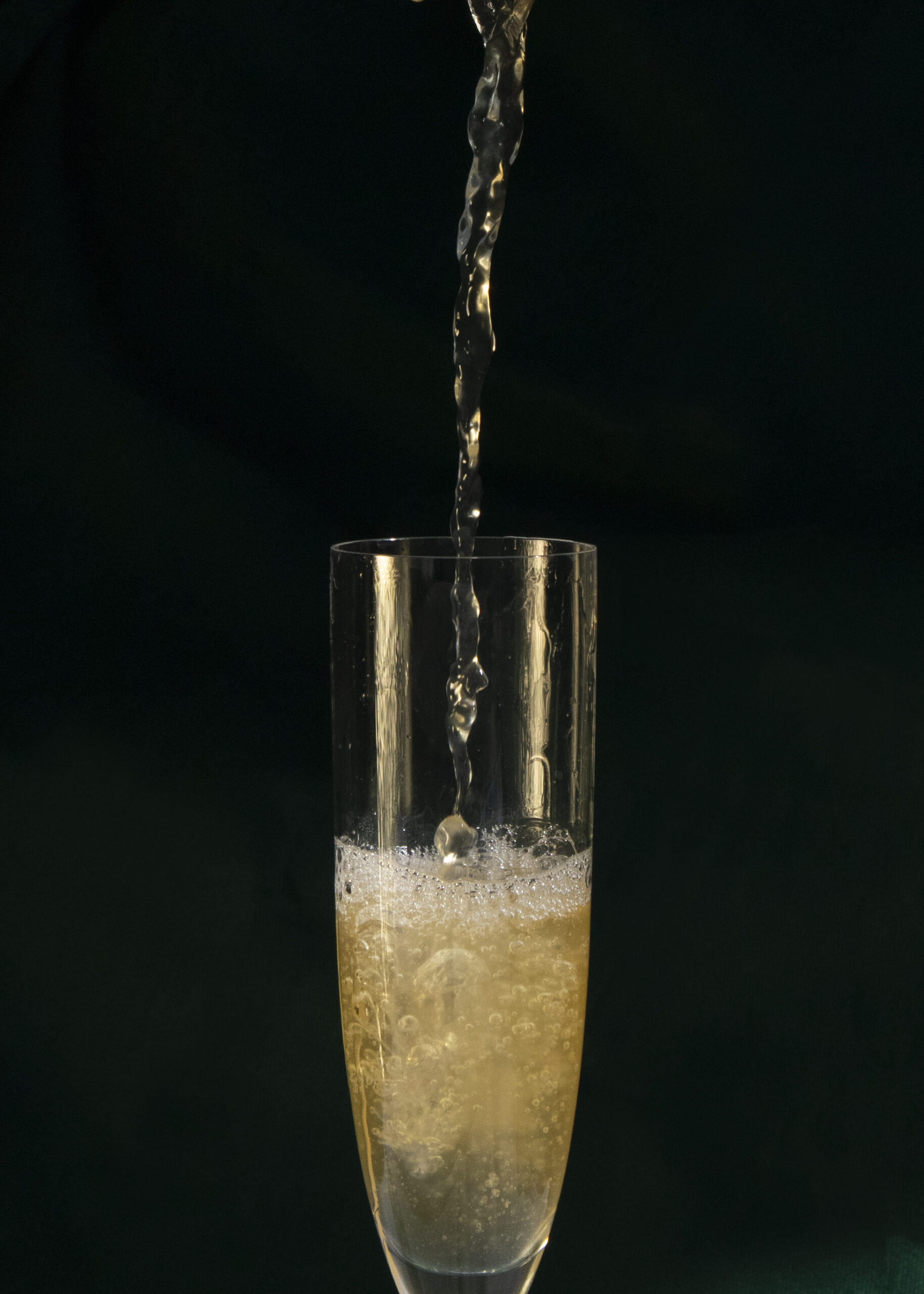
HZ:
What makes the process used at Ikenga Wines to produce palm wine sustainable and “bio-designed” and what does that mean for consumers?
OA:
Conventional wine is made from palm sap and fermented spontaneously, those are two key things. With Ikenga Wines, what I wanted to do was make the highest quality wine possible and also have the lowest environmental impact possible as well. In trying to balance these two elements we asked the question—are they linked? Is sustainability necessarily linked with quality and does it have to be? And I think with Ikenga Wines there’s a lot of experimentation and exploring of these two concepts of sustainability and quality. Increasing quality sometimes has an impact on sustainability in the conventional sense. With products like leather or coffee, you grow a lot of stuff and then you sift through it and you figure out what’s the best quality and you grade it to say “these ones are the best”.
We wanted to rethink how we approach quality. Is it something that happens statistically or is it something that you can design through more elegant design practices? That’s where bio-design comes in.
My background is in research and development, particularly chemistry, materials, and bio-inspired technologies. I looked at it from a molecule perspective of, well, what is palm wine? What is palm sap? How can we better control the palm sap coming out of the tree? And eventually getting to the point of asking the question, do we even need the tree to produce something that’s pumped out?
That’s where the biodesign part comes. That’s the core of the business. Ignoring the source and focusing on the chemistry, when it comes to the starting material. What I do is, I understand the chemistry of a palm tree, the palm sap, and I find other plant-based sources that are more efficient sources for all those components. So you don’t need to cut down the rainforest, start a palm plantation, and wait for decades in order to start producing palm wine. You can simply piece all the parts together from sources that are more sustainable than palm trees. Through this process you can specify your quality. You put all the inputs in, you produce it to your specification and you have something that’s very clean as a starting material. It’s like a blank canvas that you can then do the fermentation with in a controlled manner.
HZ:
One thing that you mentioned was that it sounds like the process requires the wine itself to be very fresh to consume. What’s the shelf life of the bottled product and then how is it different? Does it taste different?
OA:
When I first started, I didn’t know if people were already bottling it. They’ve written books about this drink, it’s supposed to be in weddings – I thought naively that it was already being bottled and they already figured it out. When I got to Nigeria, I started trying available products. There weren’t many available that had alcohol,, but processed palm sap or palm juice was globally available.
And how does that taste compared to the fresh product? They taste different, palm sap and palm wine. In general it is a fairly delicate beverage and it doesn’t hold up to a lot of conventional processing techniques. You couldn’t treat it like cider or beer. All these different flavors start to develop. That was part of my journey, asking ‘What are these off-shoot flavors?’ I started to think about how you can get rid of these. Which was a multi-year process.
HZ:
That’s very interesting. When I was reading your website I couldn’t quite put my finger on where bio-design comes in, but it is so intriguing.
But let’s go back to talking about quality. Traditionally, did you find that the quality deferred based on the tree being cut down versus it being climbed? I’m also guessing in terms of sustainability that cutting a tree is worse ecologically.
I think there’s empathy that needs to be accounted for towards the microbes and the ecology of the place
OA:
There’s thousands of species – certain ones are more sensitive to being tapped. Meaning if you tap them, basically it’s starting the death process, so you tap it until it dies. The oil palms, which are fairly common for food products, you know, palm oil in West Africa, that is something that you can tap repeatedly throughout the years. It doesn’t die upon tapping if you climb it and it’s upright. I wouldn’t say the quality comes from how you tap it, I would say there are more different flavor attributes. The upright one tastes a little bit more grassy in my opinion, a little bit more herbaceous and the fallen one just kind of tastes sweeter and doesn’t have those herbal, grassy notes, from my experience.
HZ:
That’s fair, yeah. What does this mean for consumers buying Ikenga Wines?
OA:
When it comes to consumers and the bigger question about quality in general, quality of palm wine is very variable. People who are regular consumers in regions like West Africa or Southeast Asia, and have consumed it enough times, will probably have a story about a time where they got sick from it. Foodborne illness is an issue and there’s not a lot of control over the fermentation. So, a lot of spoilage organisms get in, cappers will dilute it, or even nefarious tappers could dilute palm wine with bad water, so you can get an infection that way. That’s unfortunately something that palm wine is known for. In certain places it’s banned because of poor quality practices. To prevent diseases from spreading into human populations, some regions have outright banned palm wine.
The process used at Ikenga Wines gives us control over the microbial composition which is the key part. One for food safety, but two, for fermentation dynamics. With this method I start with sterile media or sterile bio-designed palm sap, which is something that I can completely control the microbial composition of and start doing direct inoculations with cultured isolates.
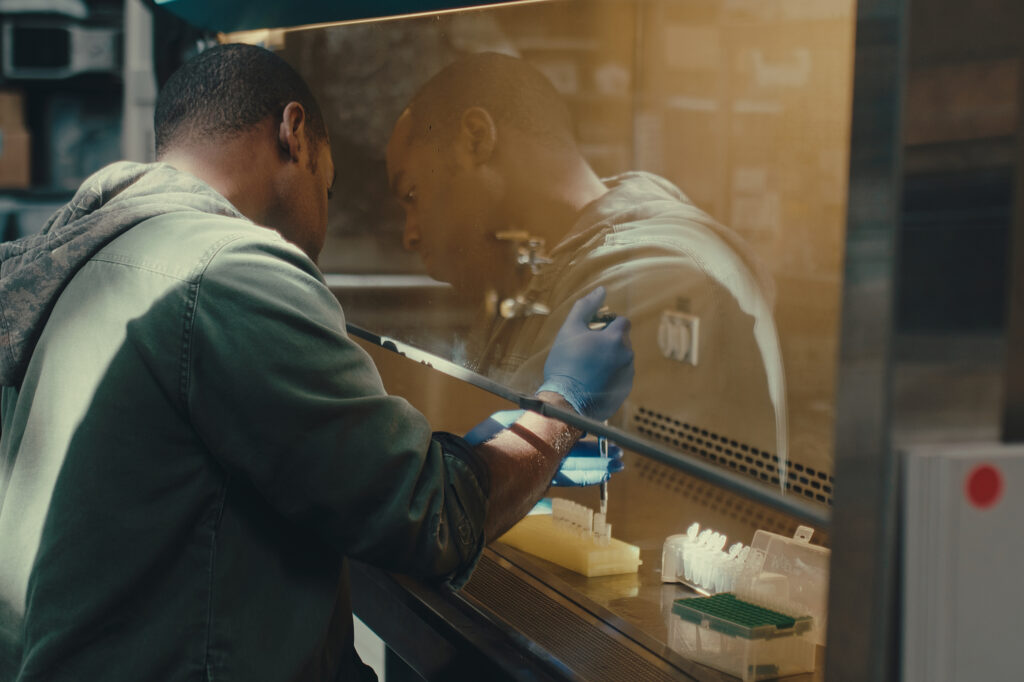
HZ:
Does that allow you to better control the flavor palette?
OA:
Palm wine is fermented by a few things, and isolating the things that ferment it and then recombining them and culturing in curated ways is how we produce the palm wine at Ikenga. I’m experimenting with a lot of different batches and flavor profiles and each one has its own curated microbes.
I also think there is a balance of art and science. A lot of the foundational stuff I’ve been working on and talking about so far has been focused on the science of it. But the art is that we could be exploring flavors and combinations of flavors and how we perceive them, which is sometimes unquantifiable. You taste something and you like it or it gives you a certain emotion. Yes, there is a science, but at the end of the day, the science doesn’t tell me these two molecules together will taste good. You have to experience it to know. It is the creative iteration, the trial and error, seeing where things go, then, going back and using the science to help you understand a little bit more.
HZ:
That’s really interesting, because flavor is definitely an art. Creating a flavor experience is definitely a creative expression that has a lot to do with your personal journey. You were talking about how you’re from Nigeria. But Nigeria is not the only place that produces palm wine. My family’s from India and Pakistan and we eat mangoes, but we’re very aware that the mangoes we eat are very different from everyone else’s mangoes, and I think that identity marker plays a big role into how I even taste the food that’s in my mouth.
OA:
Mangoes are a perfect example, there’s probably 500 or so varieties in India. Once you start trying them and noticing differences between them, it broadens your palette and now when you taste something else, that’s not mango. You may like some of the essence of this difference between these two mangoes.
HZ:
Exactly. What journey are you going on in terms of these flavor experiences? Are all the wines you produce, produced on the West Coast, in California?
OA:
So far, yes. Currently we’re pre-production, so I’m not commercially selling palm wine yet, but ramping up to that. I’m based in Oakland and for the foreseeable future home base will be in California.
HZ:
You talked about how palm wine in certain parts of the world is different from other parts and I feel like you would want to evoke a lot of those flavor notes, regardless of where you are. How do you have that conversation while being situated in Oakland right now?
OA:
Part of it is being in the place that I am designing this wine to represent. That includes tasting all the foods and flavors from that place that aren’t palm wine.
I’m starting with Nigeria because that is the place I’m most rooted in. I didn’t grow up there, I’m not living there, but I have a good idea of certain fruits and fruit profiles like mangoes and soursop. When it comes to the actual wine-making part and developing a certain [taste] profile, I find myself referencing these fruit-flavored memories and thinking this really reminds me of soursop mixed with jackfruit or a breadfruit. When I’m actually doing the wine-making, I am referencing these regions as flavor memories that I like to pursue. I’m centered in Nigeria right now, mentally, flavor-wise. But I would love to do the same thing for South India or the Philippines. Trying to tap into the cultural food theory of the region.
HZ:
Flavor is never isolated, it’s not just one product existing in a vacuum. It’s about understanding a flavor palette of communities.
OA:
I think that’s what’s really missing, is the kind of the gap in using a grape wine to pair with a tropical cuisine that doesn’t grow grapes. Maybe it’s interesting, maybe it does go together, but if you want something that is a little bit more appropriate pairing with something that is locally situated will be a bit better. My mentality for Ikenga Wines and growth is focusing on regions and trying to explore the potential of what palm wine can be, while still trying to be faithful to these regions.
HZ:
That excites me a lot because a lot of the times when we talk about food innovation within non-Western cuisines, it’s about orienting those cuisines back towards Western palettes.Your design ethos is very different from that. It’s bringing more thoughtfulness towards a traditional flavor palette. It’s like you said, it’s something that’s been around for thousands of years, but all people have ever been able to do is ask, how much can we allow this to ferment or how much can we slow down the fermentation process?
OA:
For me it’s exciting to be able to open up something that’s so old but still has life. You know, there’s still so much that hasn’t been explored. We’re talking about palm wines of different flavor profiles of the same age, but what happens when you start aging palm wine? With my process and products you’re opening up to the question of, what does a palm wine taste like from this region after a year or after two years? That’s a whole new world of flavors.
HZ:
What has been the consumer response to Ikenga Wines, how do they react when they find out it doesn’t come from a literal palm tree?
OA:
It depends on the type of consumer. People who grew up drinking palm wine, they’re surprised, not necessarily always in a well-received way. They’re more conservative consumers anyways, so they’re on the fence. Then there are, as I call them, naive consumers. People who are adventurous eaters who just love food. They love exploring. They are really intrigued because this is a new way of thinking about food. Alternative products out there are labeled not as good as the originals, but with something like this, there’s the potential for it to be as good or better in certain dimensions, than the original.
I’ve done tastings with probably 1000 people. People really like it. The folks who know palm wine think that it’s reminiscent of the original product and people who are new to it, depending on your palette, you know, find it really enjoyable.
HZ:
Do you think understanding food or wine production in a more holistic design sense helps you better curate your flavor experience?
OA:
Because I come from the bio-inspired design world and think it is valuable to look at material systems in nature and understand how nature designs and why. Design thinking is often looked at from the human centered approach. I think there’s empathy that needs to be accounted for towards the microbes and the ecology of the place and everything. The way I think about design is much more holistic and large, kind of hierarchical, multi-scalar and it all has a different impact on your ultimate experience. The human experience may be the ultimate experience at the end of the product, but having empathy for the end user as well as for the microbes, as well as for the actual environment is the perspective that I’m coming into Ikenga Wines.
